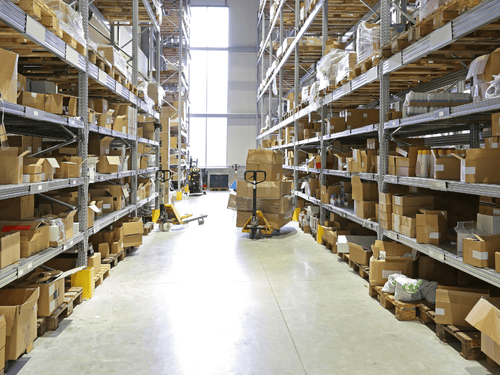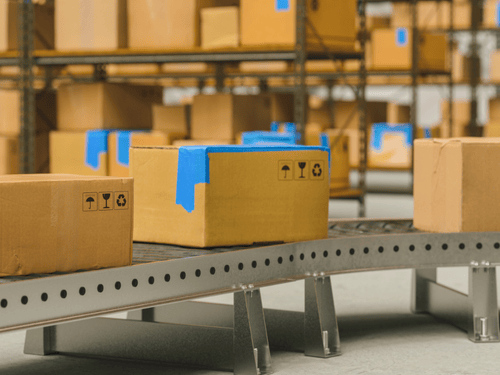Custom order kitting involves grouping multiple items into one unit for fulfillment purposes. This process is especially useful for subscription boxes, promotional sets, or product bundles. By combining products in advance, the fulfilment center reduces errors and processing time.
Why Kitting is Important
Kitting improves operational efficiency by simplifying the picking and packing process. It helps speed up order dispatch and supports inventory clarity. Businesses with frequent multi-item orders benefit significantly from structured kitting workflows.
Who Uses Custom Kitting
Retailers, e-commerce brands, and B2B suppliers often rely on custom kitting. The fulfilment center prepares tailored kits that align with marketing strategies and customer preferences. Kitting is also popular during seasonal sales or product launches.
How Fulfilment Centers Enable Efficient Kitting
Centralized Kitting Operations

A fulfilment center manages kitting from a single location to streamline logistics. This setup ensures faster assembly and dispatch while reducing handling errors. It also provides better space utilization and workflow organization.
Skilled Labor and Systems
Trained staff and organized systems inside the fulfilment center enable accurate and consistent kit assembly. These teams follow specific packing instructions to ensure quality. Digital systems further support tracking and label generation.
Coordination Across Departments
Effective kitting requires coordination between inventory, fulfillment, and shipping departments. The fulfilment center acts as the hub that connects these functions smoothly. Clear internal communication ensures that kits are ready without delays.
Labor and Automation in Kitting Processes
Manual Assembly by Skilled Workers
Some custom kits require human touch for accuracy and aesthetics. Workers at the fulfilment center follow specific guidelines for packing and presentation. This hands-on approach ensures that customer expectations are met.
Use of Automation
Automation tools speed up repetitive parts of the kitting process. Conveyor belts, barcode scanners, and packing machines reduce manual labor. A fulfilment center combines both approaches for optimal results.
Balancing Cost and Speed
The fulfilment center constantly adjusts workflows to balance speed and cost. Labor is used for detailed work, while automation handles volume. This hybrid model improves output without raising expenses.
The Role of Data in Kitting Accuracy
Order Configuration Rules
The fulfilment center relies on accurate order data to assemble kits properly. Each order may have unique configurations or personalization requirements. Software systems interpret these rules and guide the kitting process.
Error Prevention and QA
Tracking systems flag missing or incorrect components before dispatch. The fulfilment center runs quality checks based on scanned data. This ensures high customer satisfaction and fewer returns.
Performance Monitoring
Analytics tools measure kitting speed, accuracy, and cost. Managers use this data to identify areas of improvement. These insights help scale operations and enhance future planning.
Packaging Consistency and Brand Standards
Maintaining Uniformity

A fulfilment center ensures that each kit is packaged in a consistent manner. Uniform packing supports brand identity and professionalism. This is especially important for customer unboxing experiences.
Following Branding Guidelines
Kitting teams follow exact guidelines on box design, inserts, and materials. A fulfilment center maintains these standards even when handling high volume. This consistency strengthens brand perception across all orders.
Custom Packaging Options
The fulfilment center can support special packaging needs such as tissue wrapping, ribbon ties, or personalized notes. These small touches add value to the kit. Such options are often used for premium or holiday orders.
Scalability for Seasonal or Promotional Kits
Handling Volume Surges
During holidays or promotions, kit demand may spike. The fulfilment center has scalable labor and space to manage these increases. This flexibility avoids delays and stockouts during peak periods.
Temporary Storage Solutions
To manage surge inventory, the fulfilment center allocates temporary storage for kitting materials. This ensures parts are always within reach when assembly ramps up. It helps keep workflows smooth and continuous.
Fast Kit Deployment
Once kits are prepared, the fulfilment center can deploy them quickly to various regions. This supports same-day or next-day shipping goals. Speed in execution becomes a major competitive advantage.
Quality Checks Before Dispatch
Verifying Kit Contents
Each kit goes through an inspection phase before shipping. The fulfilment center checks for completeness and product accuracy. This prevents costly mistakes and maintains service standards.
Label Accuracy
Shipping labels are scanned and cross-verified with order data. Any mismatch is flagged before it leaves the fulfilment center. Accurate labeling ensures smooth transit and fewer customer complaints.
Final Packaging Checks
Packaging is checked for damage, sealing, and presentation. The fulfilment center takes extra care with fragile or premium kits. Proper handling helps maintain the product’s integrity in transit.
Return Handling for Custom Kits
Processing Returns
Returned kits are sorted and inspected for reuse potential. The fulfilment center separates damaged from resellable items. This allows partial recovery of inventory and value.
Inventory Restocking
Usable items are restocked in their correct inventory bins. The fulfilment center updates systems to reflect stock changes instantly. This supports faster turnaround on new orders.
Reporting and Analysis
Data from returns is analyzed for trends or recurring issues. The fulfilment center uses this to improve kit accuracy and prevent future returns. Continuous improvement helps cut return rates over time.
Collaboration Between Fulfilment and Customer Service
Unified Order Tracking
The fulfilment center syncs with customer service teams to offer real-time tracking updates. This helps answer buyer questions quickly. A unified view of each order prevents confusion.
Handling Complaints
If a customer reports a missing or damaged kit, support teams coordinate with the fulfilment center for resolution. This leads to faster responses and improved customer loyalty. Collaboration reduces delays in addressing issues.
Feedback Loops
Customer feedback on kits is relayed back to the fulfilment center. This helps refine packaging, accuracy, and delivery practices. These loops close the gap between fulfillment and customer experience.
Technology Tools for Tracking and Reporting
Barcode Scanning Systems
Each item in a kit is scanned to verify accuracy. The fulfilment center relies on this technology to prevent packing errors. It also speeds up the QA process.
Dashboard Visibility
Kitting performance is monitored through digital dashboards. Managers at the fulfilment center use this data to spot inefficiencies and bottlenecks. Real-time updates support agile decisions.
Audit Trails
Each action in the kitting workflow is logged for accountability. The fulfilment center can trace back any issue to its source. This builds reliability into the system.
Customization Options for B2B and B2C Clients
Tailored B2B Kits
Bulk business kits may include instructions, branded packaging, and specific documentation. The fulfilment center assembles these to meet contract terms. Consistency in large orders builds trust with corporate buyers.
Personalized B2C Kits
Consumers may request name tags, gift wraps, or themed inserts. The fulfilment center offers personalization options to elevate customer experience. These extras make brands stand out.
Subscription Kitting
Recurring kits require a set schedule and precise coordination. The fulfilment center manages these subscriptions with efficiency and predictability. Timely delivery keeps customers engaged and reduces churn.
Cost Efficiency in Centralized Kitting
Lower Labor Duplication
Centralizing kitting within the fulfilment center eliminates the need for separate prep locations. This reduces staffing overhead and simplifies operations. Labor savings improve profitability.
Reduced Packaging Waste
By using standardized packaging and workflows, the fulfilment center minimizes waste. Efficient material usage lowers shipping costs as well. It also aligns with sustainability goals.
Economies of Scale
Handling all kits in one fulfilment center creates economies of scale. Larger volume orders get processed faster and cheaper. This cost advantage can be passed on to customers.
Key Takeaways
A fulfilment center is more than just a storage facility—it plays a critical role in the success of custom order kitting. From inventory integration and scalable labor to accurate packaging and returns processing, its involvement ensures efficiency at every stage. For businesses focused on delivering fast, high-quality, and branded kit experiences, working with a fulfilment center like Vareya unlocks both operational and strategic advantages.

